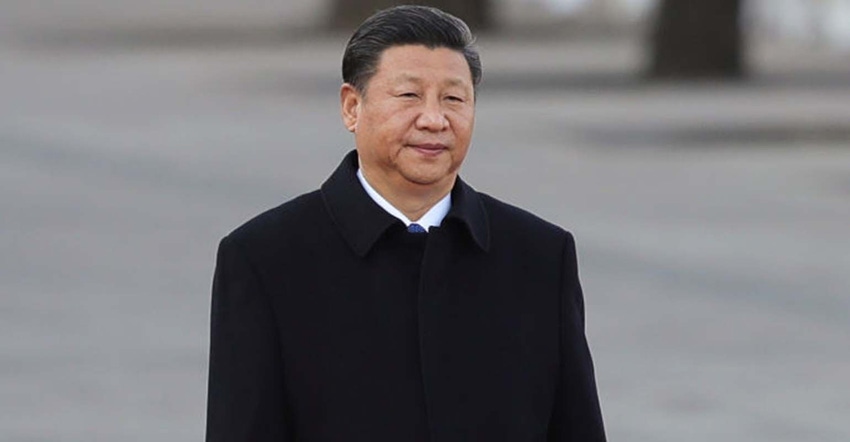
by Bruce Einhorn
President Donald Trump is a well-known fan of U.S. beef. He’s hawked Trump-branded steaks, and his standard order at the 21 Club in Manhattan is a well-done burger topped with American cheese.
So beef may be on the table when the U.S. president and Chinese leader Xi Jinping discuss trade during this week’s summit at Trump’s Florida resort.
More than six months after China promised to end a ban on American beef imposed in 2003 after a case of mad-cow disease, U.S. producers still aren’t selling to Chinese consumers, according to a letter from three trade groups representing the beef industry. That’s a missed opportunity for companies such as Cargill Inc. in the biggest overseas market for U.S. agriculture, expected to reach $22.3 billion in value during the 12 months ending September.
“The foreign market with the greatest growth potential -- China -- remains closed to U.S. beef and beef products, even as China imports large and growing volumes from our competitors,” the National Cattlemen’s Beef Association, U.S. Meat Export Federation and North American Meat Institute said in the joint March 27 letter to Trump. “We appreciate your leadership on this matter.”
U.S. trade relations with China were a cornerstone of Trump’s campaign as he accused the nation of unfair trade practices and threatened to slap a levy on Chinese products of as much as 45%. Last week, he ordered a study to identify the forms of “trade abuse” that contribute to U.S. deficits with all foreign countries.
Export markets are especially important now, given hard times in Farm Belt states, where voters overwhelmingly supported Trump. Net farm income is expected to fall for a fourth straight year to $62 billion, according to U.S. Department of Agriculture data, down from a record $124 billion in 2013.
Total U.S. agricultural exports were about $134.9 billion in 2016, a 10% decline from two years earlier, according to the USDA.
The sector was projected to get a boost of as much as $5 billion from the Trans-Pacific Partnership -- which would have opened more Asian markets for meat, grain and dairy products -- but Trump pulled out of the trade deal soon after taking office.
More Meat
Industry groups subsequently asked Trump to press Xi on resuming beef imports, especially considering China’s increasing appetite for meat. Per capita beef consumption increased 33 percent between 2012 and 2016, according to Bloomberg Intelligence, coinciding with a 38 percent increase in disposable income for urban Chinese households.
That helps ranchers in Australia, Brazil and Uruguay -- but not the U.S. American farmers exported $10.4 billion in red meats and related products globally in January-October, according to the most recent USDA statistics.
Opening China’s beef market is a top priority for Trump’s nominee for U.S. ambassador to the nation, Iowa Governor Terry Branstad, whose state has about 26,000 cattle farmers.
“I want to serve it at the embassy, and I certainly want to do what I can to try to convince the Chinese leadership to do that sooner rather than later,” Branstad said during a USDA forum in February.
The Chinese government said in September it would lift the 2003 ban on imports of bone-in and boneless beef from U.S. livestock younger than 30 months of age -- a ban triggered by a case of mad-cow disease in Washington state.
But in order for Chinese supermarkets to sell American beef, authorities need to approve proposed rules on issues including the traceability of individual animals, said Thad Lively, senior vice president for trade access at the U.S. Meat Export Federation in Denver.
Tracking Cows
The federation started working in 2015 to trace the supply chain -- from ranch to meat packer -- exclusively for “China-eligible” cattle. It demonstrated a tracking system in September to a Chinese delegation visiting feed lots and slaughter plants in the U.S.
However, there’s been no progress in obtaining Chinese approval, he said. The stalemate comes as agricultural exports to China this fiscal year are expected to increase by more than $3 billion from a year earlier, Robert Johansson, the USDA’s chief economist, said at the February forum. Soybeans are the biggest export to China.
China’s restriction on U.S. beef is among several policies impeding American exports of animal protein to the world’s most-populous country. China banned imports of American poultry in 2015 after an outbreak of bird flu in the Midwest, cutting off a major market for chicken feet, a popular Chinese snack.
Exports of the food, known in the industry as paws, to China totaled $170 million in 2014 -- the year before the ban.
Chicken Paws
“We are very anxious to get that market restored,” said James Sumner, president of the USA Poultry & Egg Export Council, an industry advocate based in Stone Mountain, Georgia. “I don’t think there was a single broiler company not shipping paws to China before the ban was implemented.”
China became the largest importer of U.S. agricultural products in 2011, and American beef producers want to capitalize on a growing middle class and their perceptions that foreign-made foods are better quality than homegrown ones.
Minneapolis-based Cargill, the biggest closely held U.S. company and one of the top grain traders, didn’t have much beef business with China before the ban. That may not be the case if Trump and Xi can work out a deal.
“There is significant potential for U.S. beef exports when China grants access,” Mike Martin, a Wichita, Kansas-based spokesman, said in an email.
--With assistance from Shruti Date Singh.
To contact the reporter on this story: Bruce Einhorn in Hong Kong at [email protected]
To contact the editors responsible for this story: Brian Bremner at [email protected]; Kenneth Wong at [email protected]
Michael Tighe, Adam Majendie
© 2017 Bloomberg L.P
About the Author(s)
You May Also Like




